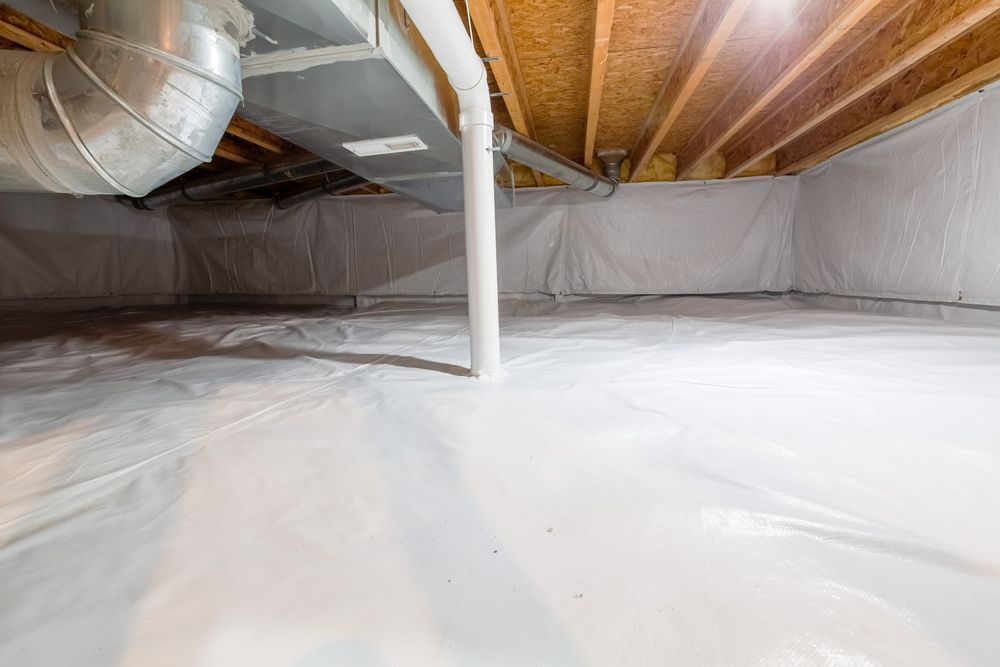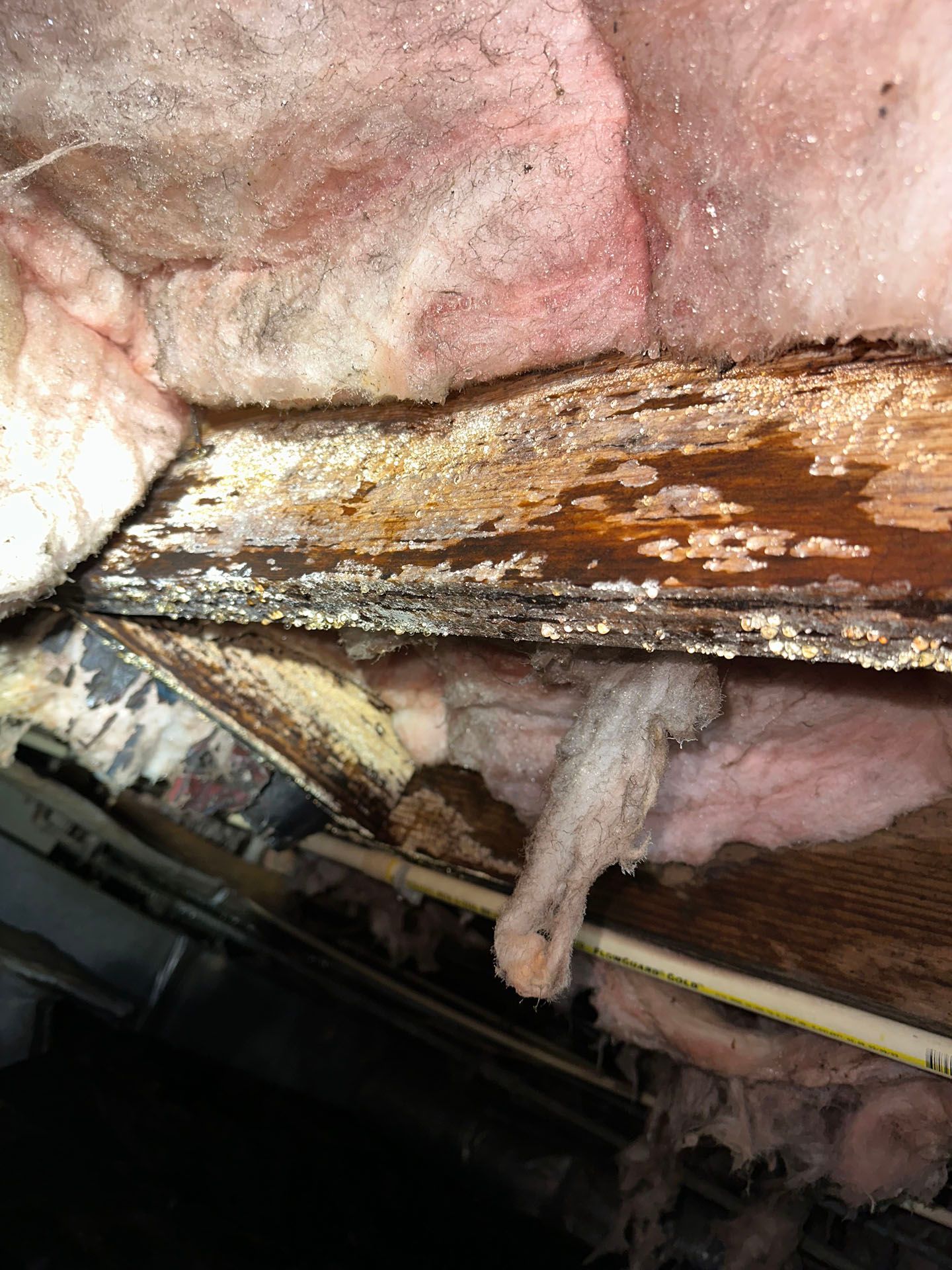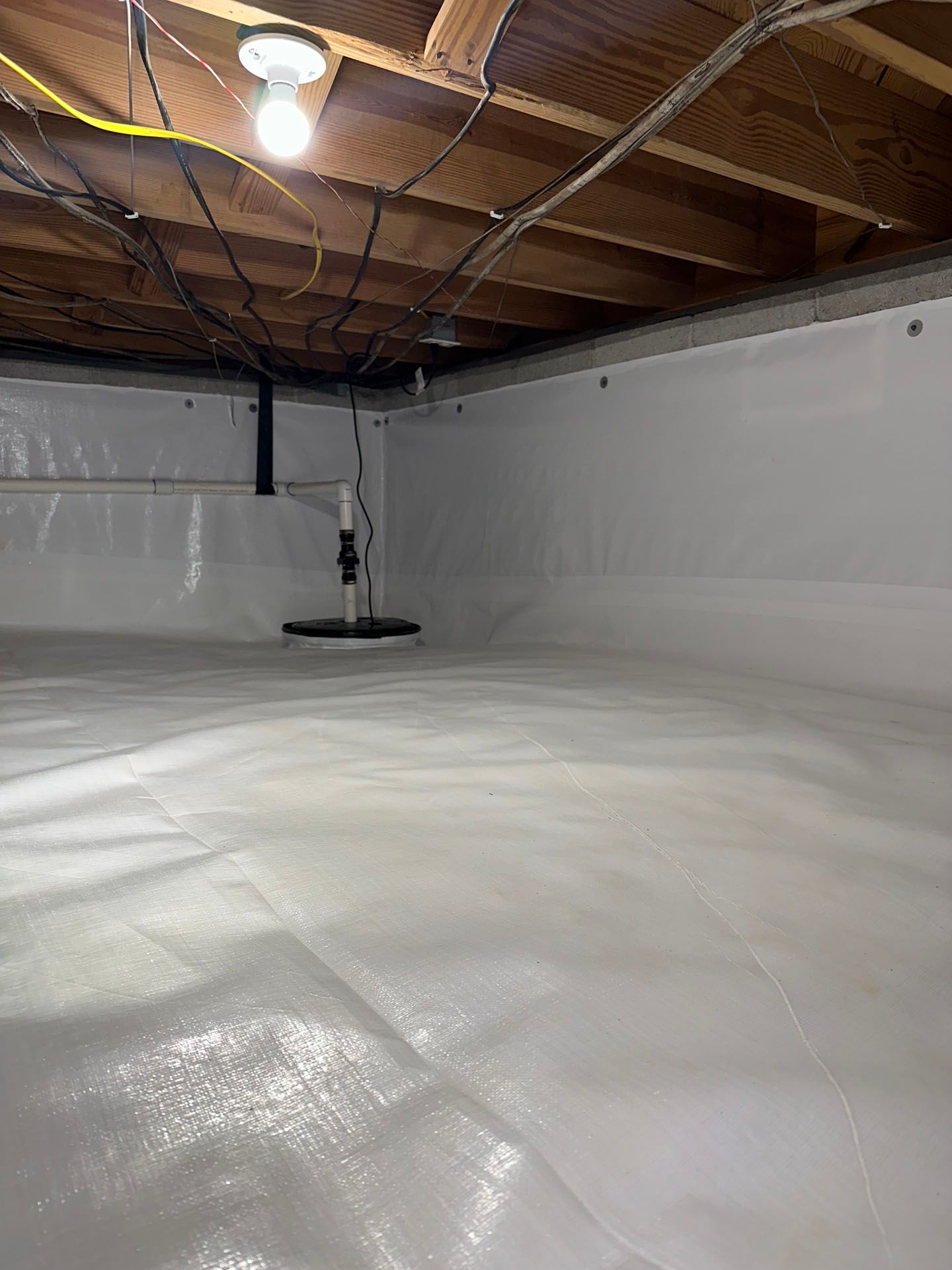Huntsville, Alabama

Claim Your FREE Crawl Space Inspection Today!
Sawyer Williams: 256-727-4422
Schedule Your Free estimate!
No-Obligation, Free Inspections
No-Obligation Free Estimates
We Warranty All of Our Work
100% Satisfaction Guaranteed
If you're a homeowner, the chances are you've probably asked yourself the question, "Is crawl space encapsulation a good idea?" After all, the crawl space is an integral part of a home's structure and can affect the air quality, comfort, and safety of your home. The answer to the question ofwhether or not crawl space encapsulation is a good idea is: yes! Crawl space encapsulation is an effective way to protect your home and keep your living environment healthier for you and your family.
To help you decide whether encapsulating your crawl space is the right move for you, we've put together all the necessary information to make an educated decision. Read on to learn more about why crawl space encapsulation is a good idea and what you need to know about the process.
Quick Review
What are the benefits of crawl space encapsulation?
Answer: Crawl space encapsulation offers many benefits, such as reducing moisture, eliminating mold and mildew growth, improving indoor air quality, preventing structural damage, and lowering energy costs.
What is Crawl Space Encapsulation?
Crawl space encapsulation is a process of sealing off the crawl space of a home or building to make it airtight and create a barrier between the outdoors and the indoor living spaces. During this process, insulation, plastic sheets, and other materials are used to fill in any existing gaps in the walls or flooring of the crawl space. The goal is to prevent water vapor, humidity, dust particles, outside air, and animals from entering the structure and causing damage to it. This also helps reduce energy costs associated with heating and cooling since there will be less air infiltration into the living area and improved insulation in the crawl space itself.
There is debate about whether or not crawl space encapsulation is a good idea. On one hand, proponents argue that it can help reduce energy costs while improving indoor air quality by eliminating sources of mold, mildew, dust mites, and other allergens that can cause health problems. On the other hand, critics point out that any unnecessary materials added to an area may result in potentially hazardous mold growth when trapped moisture builds up over time. Additionally, some homeowners may find that their investment in crawl space encapsulation does not provide sufficient benefits to justify its cost.
In short, it's important to weigh both sides of the argument before making a decision on whether or not to invest in crawl space encapsulation. In the next section we will explore more deeply what the benefits of doing so might be for homeowners.
- According to the U.S. Environmental Protection Agency, the practice of crawl space encapsulation can reduce indoor air pollution from radon, mold, and other sources by nearly 50%.
- A study published in 2018 found that properties using crawl space encapsulation had a 16.7% decrease in humidity levels compared with properties without it.
- A 2019 survey of homebuilders found that over 95% reported increased customer satisfaction when they used crawl space encapsulation on their properties.
What are the Benefits?
Crawl space encapsulation is a process meant to control moisture, repair any underlying damages, and create a healthier environment in the crawl space. It helps protect your home from water damage, humidity, pests, and more.
There are several beneficial reasons why you should consider having your crawl space encapsulated. One major benefit is that it decreases the amount of moisture in the air, minimizing risk of mold and mildew growth. It will also increase energy efficiency since the heat and air conditioning won't escape through the cold crawl space floor. This process can also improve indoor air quality by reducing dust mites, odors, and other pollutants in the home as well. Additionally, encapsulation prevents pests from entering your home from the area underneath it.
The downside of encapsulating a crawl space can be costly for some homeowners. The materials needed for this process can be expensive, especially if any repairs or sealing in the existing foundation is needed. As an alternative to installing an encapsulation system, some homeowners opt to address only the specific water issues, such as installing a sump pump or French drain. While this will help with controlling moisture levels in the crawl space, many of the other benefits discussed above are lost when opting to forego a full encapsulation system.
Encapsulating a crawl space provides many benefits but also has its drawbacks; therefore it should be carefully considered before making any decisions. The next section will discuss the types of materials most commonly used in crawl space encapsulation systems and how they apply to each individual homeowner's needs and budget.
Crawl Space Insulation Materials
When considering whether to encapsulate your crawl space, careful consideration must be taken into account with regards to the insulation materials used. For example, fiberglass batt insulation is the most commonly used product when insulating a crawl space due to its affordability and wide availability. It works by creating a thermal barrier between the exterior heat and interior cold; reducing temperature fluctuations. This helps reduce a homeowner’s energy bills as regulated temperatures keep a home more efficient.
Spray foam insulation is another option commonly used in crawl spaces that seals air leaks and provides an airtight seal, helping reduce moisture levels in the area. While this insulation method can be slightly more expensive than fiberglass, it is generally considered to provide the most effective form of insulation in that area because of its permeability and ability to fill small holes and cracks not possible with other methods.
Cellulose insulation is also frequently implemented in crawl spaces as it absorbs sound and resists fire better than other options available. However, cellulose tends to produce dust and must be monitored for proper humidity levels upon installation.
While all three methods are viable options for insulating a crawl space — with each offering pros and cons - they all serve the end goal of making the space more energy-efficient and keeping moisture at bay.
When examining cost-effectiveness, it is important to think beyond initial installation costs, taking into account future energy savings which may result from using certain types of insulation over others. With that in mind, let’s move into our next section where we will take a closer look at: “Is Crawl Space Encapsulation Cost Effective?”
Is Crawl Space Encapsulation Cost Effective?
When it comes to crawl space encapsulation, one of the key factors that homeowners often have to consider is cost. This can be a major part of the decision-making process. On the one hand, crawl space encapsulation does require an initial investment for the materials and labor. This, however, is often outweighed by the long-term benefits associated with this project.
For instance, a properly sealed crawl space can help reduce energy costs, as the space will better contain heating and cooling. Additionally, a vapor barrier helps insulate against moisture and can stop mold growth, reducing long-term repair costs due to water damage. Sealing the crawl space may also increase your home’s resale value due to its additional insulation properties.
It’s important to remember that although crawl space encapsulation requires an upfront cost, it can generally pay off in the long run due to decreased energy and repair costs — not to mention improved air quality in your home and greater property value when it comes time to sell. The potential cost savings can be well worth the initial cost of installation.
Given these considerations, it is clear that crawl space encapsulation can be a very cost-effective solution for many homeowners. By understanding the potential benefits of this project in terms of energy costs, repair costs and property value appreciation, we can see why so many homeowners are choosing this option for sealing their crawl spaces. Now that we have looked at the cost effectiveness of crawl space encapsulation, let's move on and discuss how this project can also benefit our environment in the next section.
How Does Crawl Space Encapsulation Help the Environment?
Crawl space encapsulation plays an important role in environmental protection and home safety. Taking steps to protect the environment by reducing energy consumption and keeping harmful gases from entering your homes is an essential part of good home maintenance. Crawl space encapsulation is an efficient and effective way to do just that.
The primary benefit of crawl space encapsulation is that it improves air quality, reducing moisture levels and thus limiting the growth of mold. This, in turn, keeps mold spores- which can be dangerous to humans and animals- from entering the air at your home. Additionally, sealed crawl spaces can reduce humidity, which can help create a healthier indoor environment.
An increase in energy efficiency is also a key element of crawl space encapsulation. Sealed crawl spaces help keep conditioned air in, prevent outside air from infiltrating into the living areas and make it easier for HVAC systems to maintain the temperature inside your home. The end result is lower energy usage and utility bills over time.
On the other hand, one potential downside of crawl space encapsulation is that there may be high upfront costs associated with installation and preparation. While those costs may pay off over time, they may still be cost prohibitive for some homeowners.
In summary, crawl space encapsulation offers numerous benefits to a home’s environment, including improved air quality, lower humidity levels and increased energy efficiency. In the next section we’ll discuss how these environmental benefits translate into specific improvements for households regarding moisture control, dampness prevention, and mold prevention.
Reduces Moisture, Dampness and Mold
Crawl space encapsulation is an effective way to reduce moisture, dampness, and mold. It effectively seals off your crawl space from outside air, preventing moisture from getting in, while protecting the floor joists, insulation and other contents of your crawl space. The result is fewer drafts and reduction in the problem of condensation. This can help keep mold growth at bay and create a healthier living environment for your family.
The debate about the effectiveness of crawl space encapsulation often focuses on its ability to reduce moisture and dampness levels. On the one hand, some experts point out that some types of encapsulation can be prone to leaking, which could result in increased humidity levels within the sealed space. On the other hand, many experts agree that when done correctly, crawl space encapsulation can usually reduce levels of moisture that can lead to mold growth.
That being said, if you decide to invest in crawl space encapsulation make sure it's done correctly and by qualified professionals who understand these potential issues.
Crawl Space Encapsulation is an effective way to reduce moisture, dampness and mold in your crawl spaces - leading to improved air quality.
Lead to Improved Air Quality
Crawl space encapsulation is seen as an effective and efficient way to improve the indoor air quality of your home. Encapsulating a crawl space can stop pests and moisture from entering, which leads to improved air quality by preventing any contaminated outdoor air from infiltrating the home. The barrier created contains a durable plastic sheet that serves as a vapor barrier so any condensed crawl space moisture vapor won't be able to escape and contaminate other parts of the house. Additionally, it reduces allergens such as dust mites, mold, bacteria, and other things that can be negatively affecting your health.
However, there are some instances in which encapsulating a crawl space might not have an effect on the indoor air quality. This is typically the case when toxic chemicals such as hazardous materials or gas-emitting substances like paint fumes have already infiltrated the indoor environment. In those situations, you would need professional help to fix those problems before attempting to encapsulate the crawl space for long-term improvement of air quality.
Overall, crawl space encapsulation offers many potential benefits for improving the air quality of your home if done properly and addressed in accordance with existing conditions within the specific environment. As we transition into our next topic about energy loss from the atmosphere, it's important to note how any improvements in airflow from encapsulating your crawl space could also contribute positively towards reducing energy loss within your home as well.
Helps Reduce Energy Loss from Atmosphere
When it comes to air loss from a crawl space, encapsulation can be beneficial. It effectively seals the area from outside air, creating an insulated environment and reducing energy losses due to drafts or condensation. This can help save on energy costs for heating and cooling.
Encapsulating your crawl space also helps improve indoor air quality by keeping out pollutants and other airborne particles such as mold spores. By controlling the source of these pollutants, you’ll be able to reduce indoor air contamination and make your home more comfortable.
On the other hand, some experts argue that crawl space encapsulation is not necessary in all cases, and that it could potentially do more harm than good. They state that because the crawl space is naturally well ventilated there is no need to seal it off completely. Other experts argue that the installation of a vapor barrier can actually increase moisture levels in the crawl space since moisture will be unable to escape, leading to potential mold growth or structural damage over time.
There are pros and cons for each side of this debate when evaluating whether or not crawl space encapsulation is a good idea, so it’s always best to have a licensed professional assess the specific conditions in your crawlspace before making a decision.
Whatever path you choose to take, it's important to understand the potential benefits and drawbacks of each option before making a commitment. With this knowledge in hand, you'll be ready to evaluate whether or not getting crawl space encapsulation makes sense for you. The next section delves into the question: Should You Get Crawl Space Encapsulation?
Top Points to Remember
Encapsulating a crawl space can be beneficial by creating an insulated environment to reduce energy loss, improving indoor air quality by keeping out pollutants, and providing a healthier home environment. However, not all experts agree that crawl space encapsulation is necessary in all cases, and it could potentially increase moisture levels leading to mold growth and structural damage. It is important to understand the potential benefits and drawbacks of each option before making a commitment about whether or not getting crawl space encapsulation makes the most sense for your particular home.
Should You Get Crawl Space Encapsulation?
Crawl space encapsulation is a popular home improvement aimed at creating a healthier and more energy-efficient living space. But is it right for your home?
On one hand, crawl space encapsulation has been proven to reduce heating and cooling costs while decreasing vulnerability to flooding, pests, and mold growth. Furthermore, reducing air flow between lower and upper levels of the home can promote better indoor air quality throughout the house. These benefits make crawl space encapsulation an attractive option for many homeowners looking to improve their quality of life.
However, there are some potential downsides to consider as well. For one, the process of encapsulating a crawl space is not a do-it-yourself job. Most uninitiated homeowners will require the assistance of an expert contractor in order to ensure that the work is done correctly, which can be expensive. Additionally, homeowners should be aware that vapor barriers require periodic maintenance to maintain proper functionality – meaning that any savings from increased efficiency may be offset by ongoing maintenance costs.
Given all this information, should you pursue crawl space encapsulation? Ultimately, it depends on your own unique circumstances and needs. If you are looking for a cost-effective solution that reduces energy bills while promoting better indoor air quality, then crawl space encapsulation might be the right choice for you. However, if the cost or complex nature of the job process is prohibitive, then other less labor-intensive options may make more sense.
No matter what route you take, it’s important to talk to an expert before making any decisions about crawl space encapsulation. In the next section we'll discuss expert considerations when deciding whether or not to opt for crawl space encapsulation.
Expert Considerations
When considering if crawl space encapsulation is a good idea, homeowners should weigh the opinions of professional experts. Most experts agree that crawl space encapsulation can improve air quality and energy efficiency in homes. Crawl space encapsulation can reduce moisture levels, making indoor living spaces healthier and more comfortable. It also helps to isolate any contaminants or toxins present in the crawlspace, preventing them from entering the home's living areas.
On the other hand, professionals debate whether basic insulation or sealing projects are sufficient protection against moisture or weathering damage without the need for full crawl space encapsulation. Some contractors suggest that basic insulation works just as well with increased energy savings and improved air quality. Conversely, those who advocate for crawl space encapsulation suggest that it offers superior protection from moisture, pests, and mold growth. Additionally, some argue that crawl space encapsulation offers extra safety from radon gas, which can cause serious health problems when it's inhaled over time.
Ultimately, homeowners should consult an expert based on their specific needs for a crawl space solution before committing to a project. A trained contractor can evaluate the property and discuss the available solutions to help determine which option would provide the best long-term benefits in terms of cost-efficiency, air quality improvement, and energy savings. In this way, homeowners can ensure they make an informed decision regarding their home's crawl space needs.
FAQ
How do you properly encapsulate a crawl space?
In order to properly encapsulate a crawl space, there are several steps that should be taken. First, the entire crawl space must be thoroughly cleaned out. All debris such as leaves, dirt and cobwebs should be removed from the space. Then, all vents and any other openings leading into the crawl space must be sealed off, as these can let in moisture and also create drafts that can make an encapsulation effort less effective. Once this is complete, a waterproof plastic liner or cement board should be installed on the walls and floor of the crawlspace to prevent further moisture infiltration. Finally, a system of dehumidifier and an energy-efficient ventilation fan should be added to keep the air inside the crawl space dry and comfortable.
These steps are necessary in order to ensure that your home’s crawl space remains structurally sound and safe from mildew, mold, fungus, viruses and insect infestations. Additionally, when done correctly, an effectively encapsulated crawl space can also help reduce your energy bills by creating an insulated barrier between your home’s interior and outside temperatures.
What are the benefits of crawl space encapsulation?
Crawl space encapsulation offers many benefits, including improved air quality, reduced moisture, an increase in energy efficiency, and mold control.
Improved Air Quality: Crawl space encapsulation provides a vapor barrier that seals off the crawl space from the rest of the home. This helps prevent allergens and other pollutants from entering the living environment. Additionally, air sealing around the walls and floors will provide additional protection from allergens and other pollutants making their way into the home from outside.
Reduced Moisture: Sealing off the crawl space with a vapor barrier decreases humidity levels in the area. This can help reduce the risk of condensation, which often causes damage to insulation, wood floors, and other areas of the home. Additionally, it prevents outside water sources such as rainwater, soil saturation due to flooding, or ground water from entering and wreaking havoc on your home's foundation.
Increase in Energy Efficiency: Crawl space encapsulation serves as an effective air barrier that reduces unwanted air infiltration into the home. This results in a more consistent indoor temperature throughout the year which can lead to lower energy costs than would be experienced without it. Additionally, by preventing water from building up around the foundation and walls of your home, there is less of a risk for mildew or mold growth thus reducing additional energy costs associated with repairing or replacing damaged materials.
Mold Control: A major benefit of crawl space encapsulation is controlling mold growth in your basement or crawl space. By eliminating extra moisture and providing an effective vapor barrier against outside contaminants will create an environment less likely to produce mold spores and particles that can cause illnesses if breathed in regularly.
What are the potential drawbacks to crawl space encapsulation?
The potential drawbacks to crawl space encapsulation typically relate to the cost and complexity of the project. In order to properly complete a crawl space encapsulation project, specialized equipment and materials are often required, which can result in higher expenses. Additionally, because this type of home improvement usually involves some type of remodeling or construction, it can be time-consuming and require skilled labor to ensure an efficient job. There is also the possibility of moisture buildup resulting from vapor barriers installed in the crawl space, which can cause mold and rot. Furthermore, if a crawl space encapsulation project is not completed correctly, it could actually make your home less energy-efficient due to heat transfer that can occur through faulty vents or improper insulation.

Written by Sawyer Williams
Precision Crawlspace & Renovations
Sawyer has specialized in crawl space and foundation repairs for over six years. As the founder of Precision Crawlspace and Renovations, he is one of Huntsville's top experts in crawlspace moisture control. He has prior experience installing these systems, which has prepared him to solve complex problems related to crawl space encapsulation, mold remediation, and waterproofing.
Recent Blog Posts
Huntsville's Crawl Space News



What are you waiting for?
We Solve Crawl Space Issues!
Get reliable crawl space repair services at an affordable price, provided with the high level of service you deserve.
Call Us Today at: 256-727-4422
All Rights Reserved | Precision Crawlspace & Renovations

